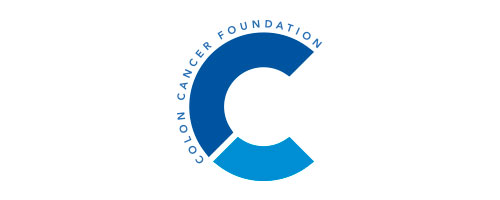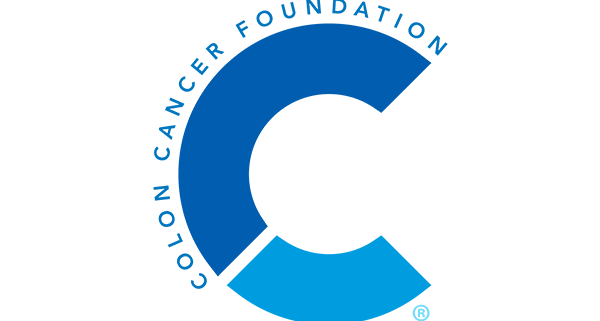The Colon Cancer Foundation’s Lakshmi Yeturu sat down (virtually!) with Dr. Brian Dooreck to find out more about his initiative to arm newly diagnosed colorectal cancer patients and caregivers with substantial resources as they bravely face their diagnosis and treatment.
Can you tell me a little bit about yourself: your personal and academic background and your interests?
My name is Dr. Brian Dooreck. I am a gastroenterologist focused on GI [gastrointestinal] and liver disease. I trained at the University of Miami Jackson Memorial Hospital and have been in clinical practice for 15 years in South Florida, seeing patients for all GI-related issues. My training goes back to New York, Boston, Tel Aviv, NYC, and Miami. As a clinical gastroenterologist, I am quite involved with my patients in a relatively busy practice, but I am also engaged in other aspects of the medical, nonprofit, and entrepreneurial worlds.
The Colorectal Cancer Provider Outreach Program [CRC POP] was just an idea a few months ago that quickly became reality. What I have repeatedly experienced over the years is that when we diagnose people with colorectal cancer, we’re telling them that they have a problem. As they are waking up from sedation [following a colonoscopy], we tell them: ‘You have a problem and this is what we need to do: you need to get labs, you need to get a CAT scan, you need to see a surgeon, you need to get the follow-up biopsies and then see me in a week or two. We will get through this; we will work together.’
But what we have not been doing—and I have realized this now after having spoken to groups representing over 1200 gastroenterologists—is telling patients, ‘Listen, go home, look into these websites and call these numbers. I will see you in a week or two and we will go over things.’ But you have support starting now:
- You want to take out your phone and text this number: COLON to 48-48-48, which pops up a PDF with all the organizations, their websites, and their phone numbers
- Go to our website, go to the Colorectal Cancer Help Page that has links to the websites of patient organizations
- Look at your EMR discharge instructions; you’ll find more information there
So, there are these three areas which we can share with patients at the bedside, post-procedure as we’re delivering their diagnosis, and it can direct them to resources that they are otherwise, and most likely, going to trip over if they were Googling, ‘Am I going to die from colon cancer?’ They’re not going to find it on their own, but they may join a social media network group and see a Facebook posting. They’ll probably trip over rather than go to it directly, or they’ll go to it much later in the game.
What I am trying to do is get patients to these resources much earlier, when they have just been diagnosed.
What prompted you to work within gastroenterology and hepatology? Specifically, within colorectal cancer?
I chose gastroenterology early on in my internal medicine training, probably by my first or second year in New York City. I specifically remember just having related to it. From the aspect of your social life or social disposition, having abdominal pain, colitis, diarrhea, or bloody stools is a real damper to your Saturday night dating and it would really affect your social life.
I also understood it. I think we’ve all had diarrhea, we’ve all had abdominal pain and I know what it’s like. You can walk around with heart disease, kidney failure, lung disease, and lung cancer and you may not have to tell someone. But to have to urgently run to the bathroom, not be able to eat meals, have severe cramping, or if you are losing weight because of it, you will be forced to tell someone. That really is something I related to. I felt I could help people’s quality of life in a much broader, quicker way.
Would you mind describing your past work and research efforts within this field and their significance to colorectal cancer?
Over the years, during my clinical research and fellowship at the university, I have been involved in different aspects of research and I’ve always had an alignment with colorectal cancer. I started realizing that GI is my field of interest quite early on. I remember rotating through Memorial Sloan Kettering Cancer Center, where Dr. Sidney Winawer was one of the pioneers of colon polyp detection. So, for me I’ve always had a proximity and drive towards it; I’ve always been much more interested in the clinical aspects of the field.
Personally, being engaged with social media platforms, I saw a great ability to leverage technology to further benefit our patients. This tool that we have created allows patients to get the support they need at the time of diagnosis ‘here and now,’ and it will alleviate so many levels of burden. There is nothing more shocking than telling someone ‘you have cancer.’ There are about 14,000 gastroenterologists in the United States and about 150,000 people diagnosed each year with colorectal cancer. So, we have 14,000 gastroenterologists making those diagnoses each year. You can add multiples of that to account for family members and other people that are simultaneously affected by that one diagnosis.
How many of those people are going to go through the support services that are available from the five organizations we’re partnering with at the time of diagnosis? We expect that very soon, the support that we are providing at the time of diagnosis can not only help the patient and their family, but also promote screening and prevention for those organizations that have preventive screening programs. So, the benefits are huge and using the providers for this is our goal.
What was your primary inspiration to develop this program aimed at newly diagnosed colorectal cancer patients?
Like I said, having seen this now a thousand times if not more. We are not leveraging the available resources, and you know it is quite different for colorectal cancer. For breast cancer, for example, if you feel a lump, you can get a mammogram, get a biopsy and ultrasound, and follow up with the doctor. It is a period of 2-3 weeks, probably, and you as the patient know what’s going on and you’re aware of the conversation. With prostate cancer, you know something is not feeling right if the PSA is high, the physical exam is off. When you get the biopsy results, you are awake or aware the whole time, so you know what’s going on and you are a part of the conversation.
In the case of colon cancer, you come to me saying, ‘I have some rectal bleeding’, ‘Oh I have hemorrhoids’, ‘I feel perfectly fine’, ‘I need to get a screening’, ‘I’ve been 5 six years late’, ‘OMG I have colon cancer and I kind of blew it off for a few years.’ You come to me feeling fine and not suspecting a problem. Then you go to sleep [for the colonoscopy procedure], wake up 15-20 minutes later and you have colon cancer. We don’t hear anything after the cancer diagnosis. That’s our differentiator and what we do in my field, in my space, in my world is we’re dealing with a cancer where the diagnosis is made at the bedside post-sedation and more than ever everything becomes very clouded for the patient. So, with CRC POP, we can help people through that cloud.
What inspired you to be at the forefront of the Colorectal Cancer Provider Outreach Program (CRC POP)? Who are your lead collaborators on this project and are you looking to expand your partner organizations?
The focus of the Colorectal Cancer Provider Outreach Program [CRC POP] is reaching the providers who will then share the resources with their patients.
We are currently partnering with five supporting organizations: American Cancer Society, Colorectal Cancer Alliance, Fight Colorectal Cancer, Colon Cancer Coalition, and the Colon Cancer Foundation. These five organizations are, in my eyes, equal partners and our goal is to reach providers and to give patients the options of these five organizations. Each organization has its own strengths and weakness, specialty, and focus—it is up to the patients to find what best serves their needs.
We received support from a company called Easy Texting that’s giving us the ability to allow patients to text the word ‘COLON’ to 48-48-48 at the bedside. This will generate a PDF with the link and phone numbers to these five organizations. My goal is to work closely with three national associations: the American College of Gastroenterology, the American Gastrointestinal Association, and the American Society of Gastrointestinal Endoscopy, to develop better communication with the 14,000 gastroenterologists in the U.S., and to use their influence to quickly, and easily, reach more providers and in turn more patients.
Part II of this interview can be found here.


